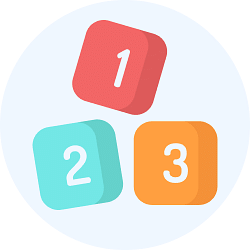Class 1 Exam > Class 1 Notes > English Grammar for Junior Classes > Modals
Modals | English Grammar for Junior Classes - Class 1 PDF Download
Modals add definition to the main verb in a sentence by showing possibility, ability, permission, or responsibility. Like “can” shows the ability to do work, it can be used to take permission (In an informal way). “May” shows the possibility and it also can be used to take permission (In a formal way).
Examples:
- Can you open the door?

- The physician can see you now.
- I must go now.
- May God bless you!
- You should go there.
- I used to play cricket when I was a child.
Can, Could, May, Might, Shall, Should, Will, Would, Used to, are some modals.
The document Modals | English Grammar for Junior Classes - Class 1 is a part of the Class 1 Course English Grammar for Junior Classes.
All you need of Class 1 at this link: Class 1
|
18 videos|170 docs|35 tests
|
FAQs on Modals - English Grammar for Junior Classes - Class 1
| 1. What are modals in English grammar? |  |
Ans. Modals are a type of auxiliary verb in English grammar that are used to express ability, possibility, necessity, permission, and other related meanings. They modify the main verb in a sentence.
| 2. How many types of modals are there in English grammar? |  |
Ans. There are nine primary modals in English grammar: can, could, may, might, shall, should, will, would, and must. These modals are used to convey different shades of meaning in sentences.
| 3. What is the difference between "can" and "could" in modals? |  |
Ans. "Can" and "could" are both modals used to express ability or possibility. However, "can" is used in the present tense to talk about general abilities or possibilities, while "could" is used in the past tense or as a more polite form to make requests or ask for permission.
| 4. Can modals be used in negative sentences? |  |
Ans. Yes, modals can be used in negative sentences by adding "not" after the modal verb. For example, "I cannot swim" or "She should not eat too much sugar."
| 5. Are modals followed by the base form or infinitive of the verb? |  |
Ans. Modals are followed by the base form of the verb, without "to". For example, "She can swim" or "They should study."

|
Explore Courses for Class 1 exam
|

|
Signup for Free!
Signup to see your scores go up within 7 days! Learn & Practice with 1000+ FREE Notes, Videos & Tests.
Related Searches


















